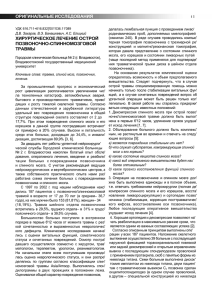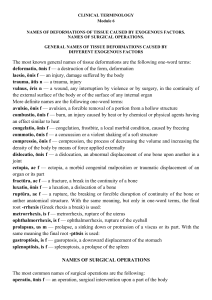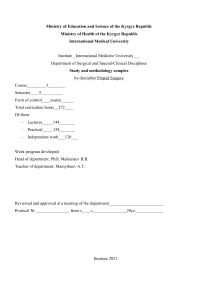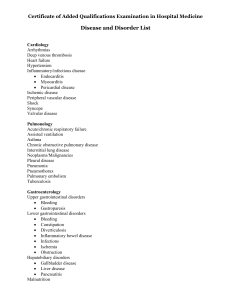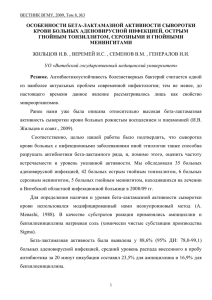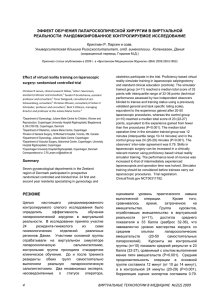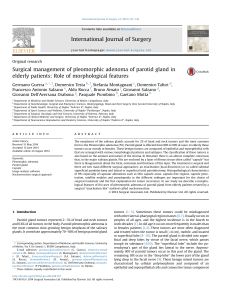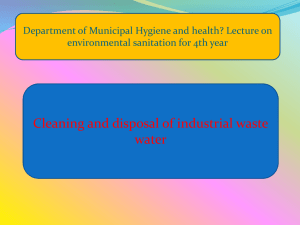communal and labour hygiene department
реклама
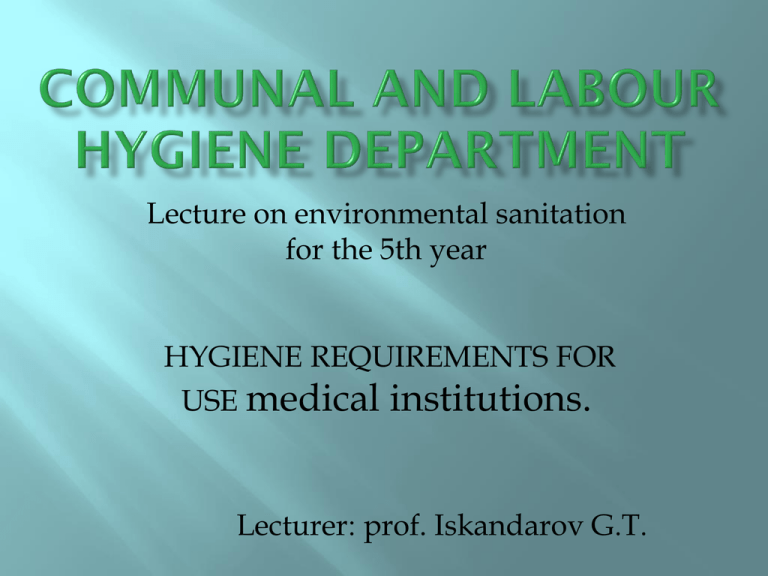
Lecture on environmental sanitation for the 5th year HYGIENE REQUIREMENTS FOR USE medical institutions. Lecturer: prof. Iskandarov G.T. a) the patient; b) medications; c) occupational health workers; d) physical and emotional load. • Climate. • Lighting. • insolation. • Noise. • The aesthetic factor. • Nosocomial infections - an infectious disease, getting sick in the hospital. • Currently, developed clear guidelines for the prevention of air, dropping, contact and exogenous infection. antibiotic resistant strains: • Staphylococcus aureus • Pseudomonas aeruginosa • protea • E. coli • and other To do this, carry out the following activities: • Create specialized purulent surgical department. • operating and dressings are divided into surgical departments for pure and purulent operations and dressings. • Do not conduct operations in patients with purulent surgical infection in general surgical operating rooms. • put into practice the most common method of processing high-quality field, hands, surgical gloves, sterilization of surgical instruments of a new wound dressing, surgical linen. • Introduction of rapid diagnostic sensitivity of microbial flora to antibiotics. • Organization in medical institutions of centralized sterilization. • Organization of a complex sanitary measures in offices, offices, hospitals, clinics, surgical, guided by the instructions. Terms thorough cleaning and disinfection of all items and equipment in hospitals is important for aesthetic reasons and to reduce the microbial contamination of surrounding surfaces. Improper handling of medical instruments and equipment, as well as other health products is a common cause of hospital-acquired infections. Decontamination - a general term which refers to a treatment process for removal of infectious agents, whereby the use of the subject being treated becomes safe. cleaning process remove visible dust, dirt, organic and other foreign materials. usually carried out with water and soap. Cleaning must always precede disinfection and sterilization. Disinfection process of destruction of most pathogens, excluding bacterial spores. For biological tissue used the term "preservative". Sterilization process of destroying all forms of microbial life including bacteria, viruses, spores and fungi. Sanitization premises of health facilities is carried out using detergents or disinfectants with cleaning effect means. For sanitizing facilities health facilities may be used only disinfectant that is officially authorized the Main Directorate of Sanitary Inspection Ministry of Health of the Republic of Uzbekistan 1. ensure the destruction of pathogens of nosocomial infections - bacteria, viruses, fungi, at room temperature; 2. have cleaning properties, good or combined with detergents; 3. have a relatively low toxicity (4-3 class of danger) and to be environmentally friendly; 4. be compatible with different types of materials; 5. be stable, non-flammability, easy to handle; 6. not have a locking effect on organic pollution Infectious, surgical, obstetric hospitals procedural lookout dressings, dental surgeries immunocomprimised department for patients and intensive care Children's Department, where there is a risk of infection due to a high degree of contamination by micro-organisms or objects increased susceptibility to infections in indoor contingent. rags, towels, sponges, scouring pads, etc. - After cleaning and processing facilities are soaked in a disinfectant solution, after exposure or erase washed, rinsed with tap water, dried and stored in a specific location. First (physiological) obstetric department includes: • Reception and transmission unit • Reception and transmission unit maternity ward includes a reception room (lobby), filter and viewing rooms. Sight of the room, there are separately for physiological and observational units. Each room has an observation for processing incoming women, toilets, showers, installation for washing boats. If the nursing home operates gynecology department, it should have a separate receiving and transmission unit. Pregnant or new mother, entering the reception area, removes the robe and goes into the filter. In the filter, the doctor decides whether this woman to the hospital and hospitalization in a department (Chamber of pathology, I, or II obstetrical department). Maternity unit includes: • Maternity unit includes • prenatal Chamber • intensive care • Chamber of birth • room for babies • Operating unit (large and small operating, preoperative room blood storage, portable equipment) • offices and rooms for the medical staff, bathrooms, etc. THANK YOU FOR ATTENTION!

